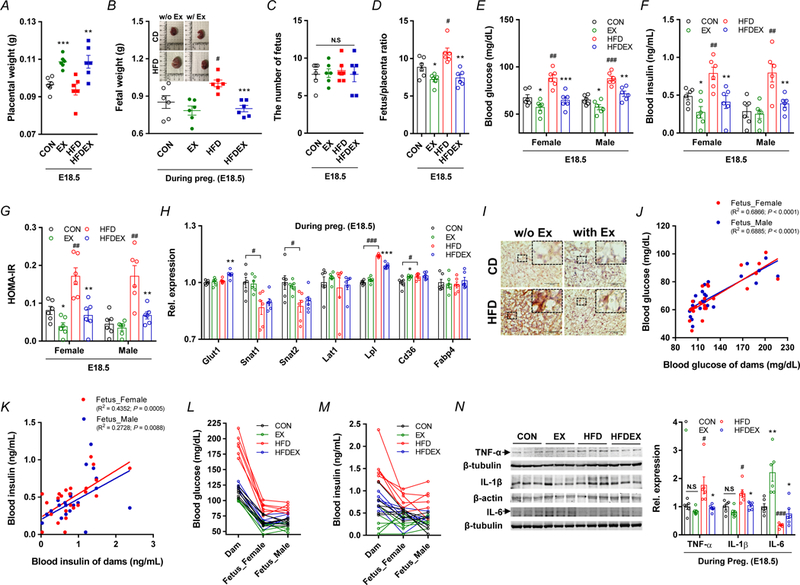Figure 4.

Maternal exercise training regulates placental efficiency and nutrient transport, and fetal metabolic parameters. A-D, Placental parameters of CON or HFD with/without exercise mice: placental weight (A), representative fetal images and weight (B), the number of fetuses per dam (C), and placental efficiency (D). E-G, Blood glucose (E), insulin (F), and insulin resistance (G) in E18.5 fetuses. H, mRNA levels of different nutrient transport markers in CON or HFD mice with/without exercise training. I, Representative images of Oil Red O staining in the placenta, Scale bar, 100 μm. J-M, Pearson correlations (J,K) and distributions (L,M) in the blood glucose and insulin levels between dams and fetuses. N, Cropped western blots of tumor necrosis factor α (TNF-α), interleukin-1β (IL-1β), and interleukin-6 (IL-6) in the placenta (β-tubulin or β-actin were used as the loading control, n = 6 per group). Data are expressed as the mean ± s.e.m. *P < 0.05, **P < 0.01, and ***P < 0.001 in CON vs. EX or HFD vs. HFDEX; #P < 0.05, ##P < 0.01, ###P < 0.001 in CON vs. HFD by two-tailed Student’s t-test (A-H, L) followed by multiple comparison and Pearson correlations analysis (J,K).
